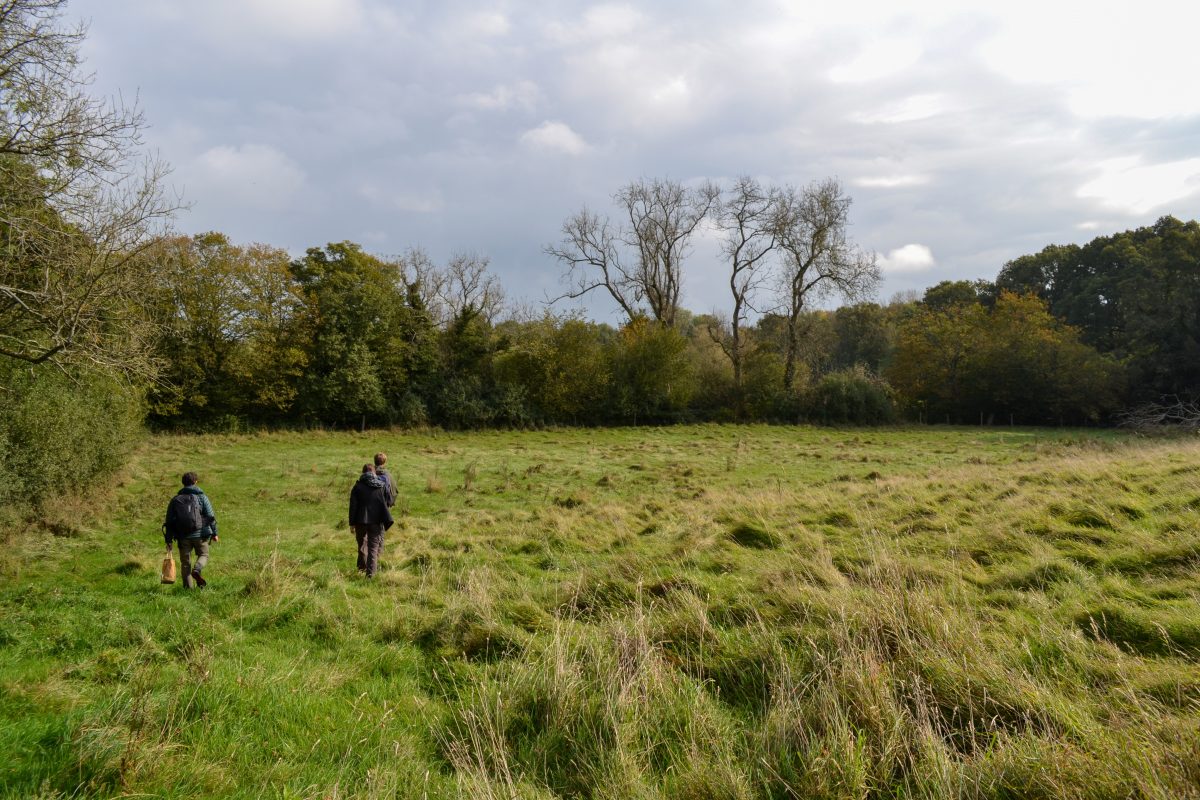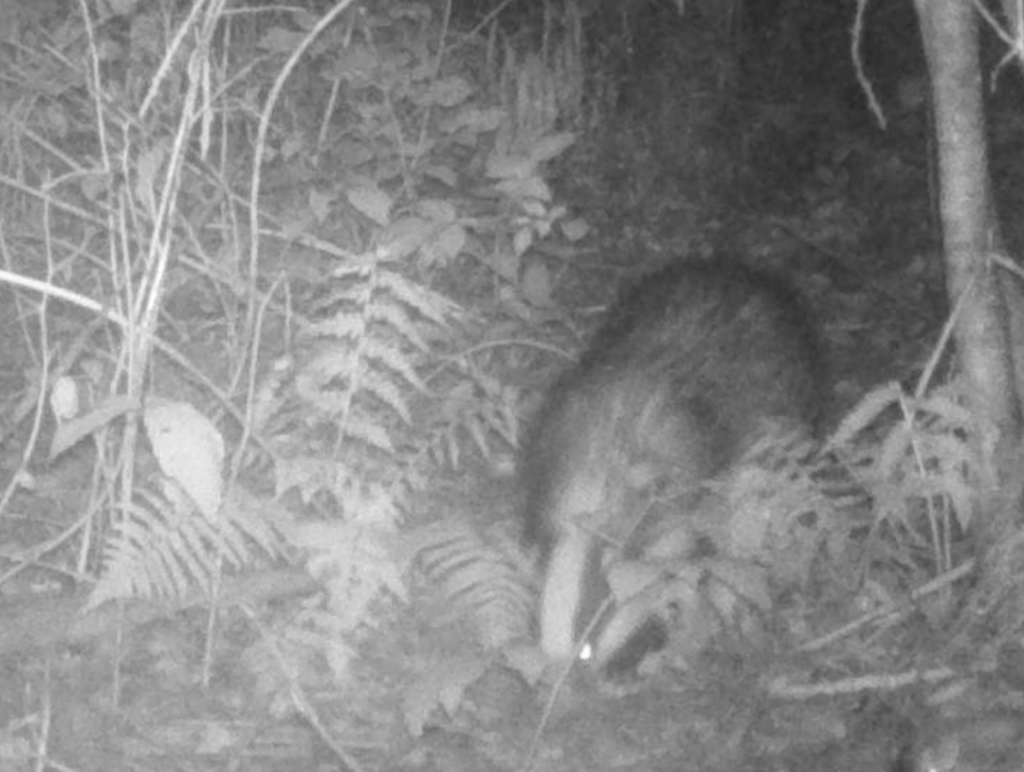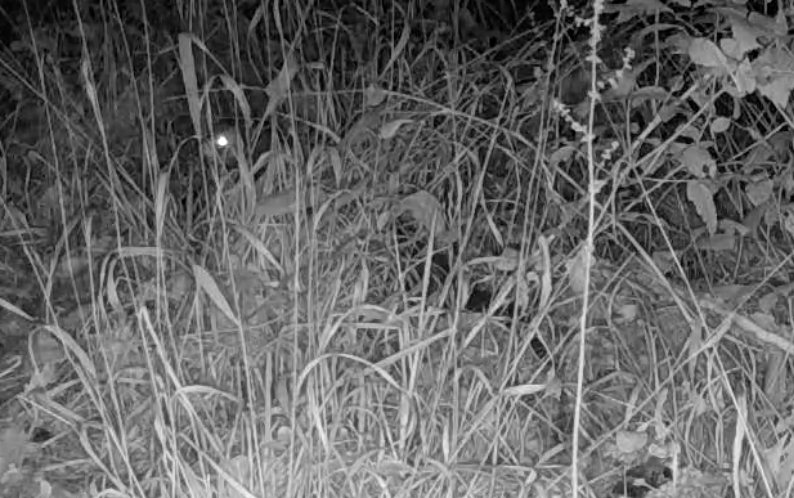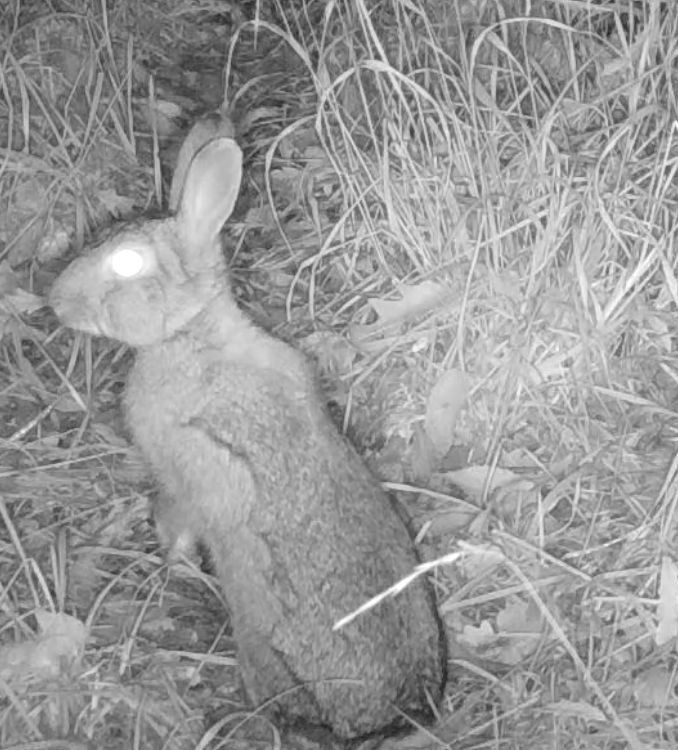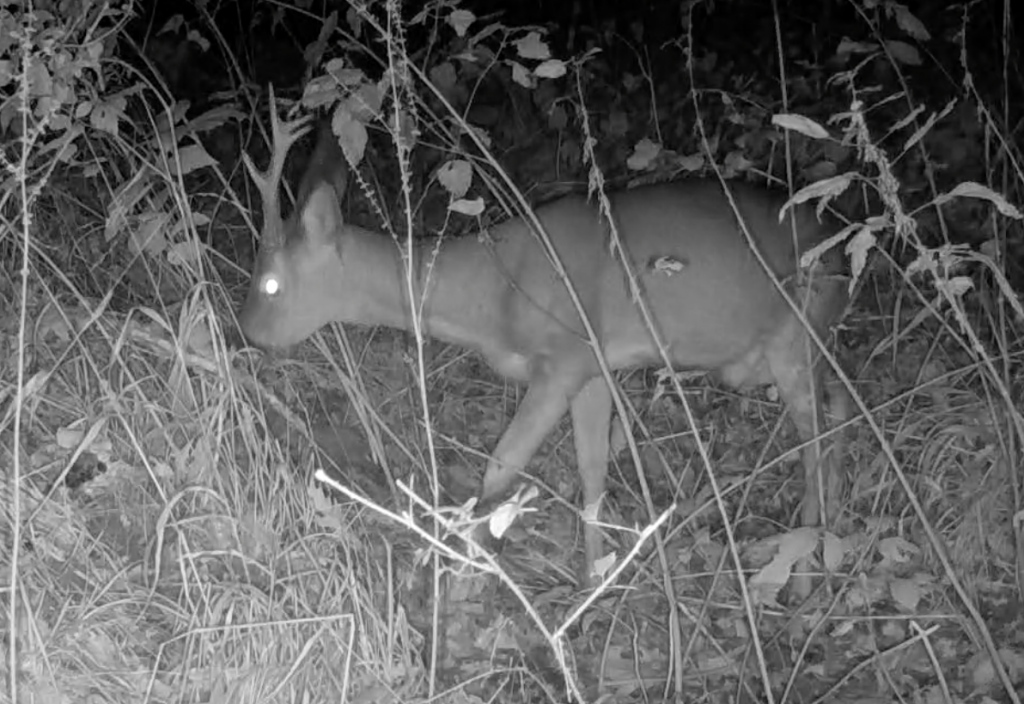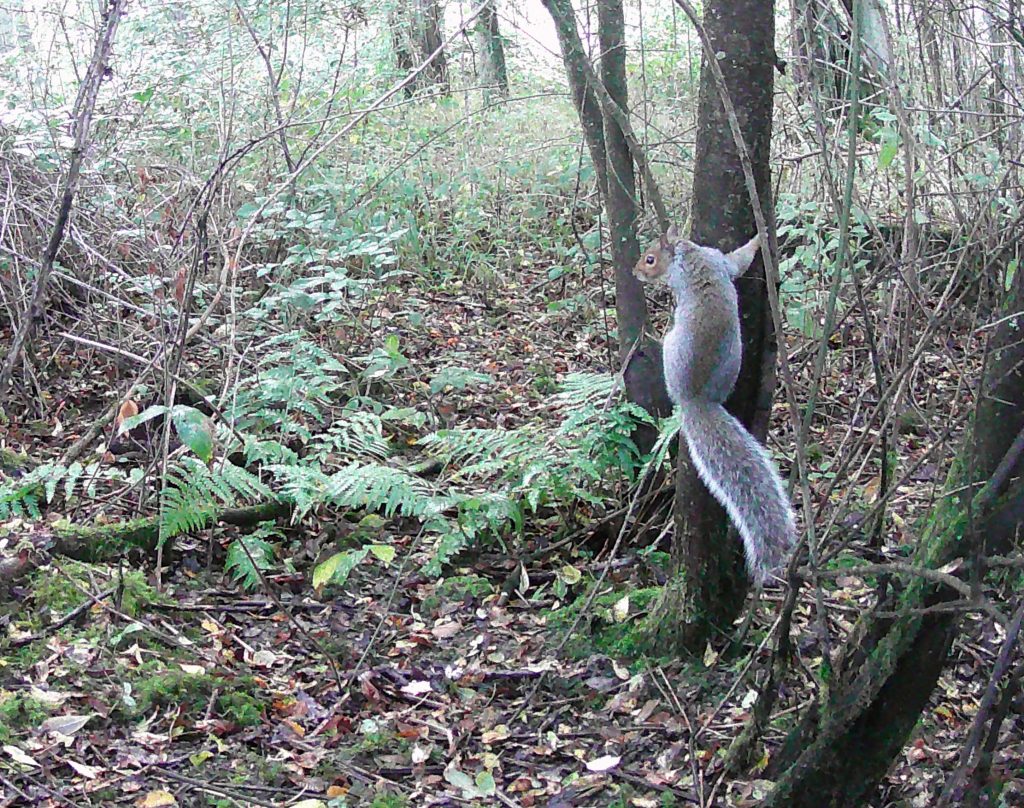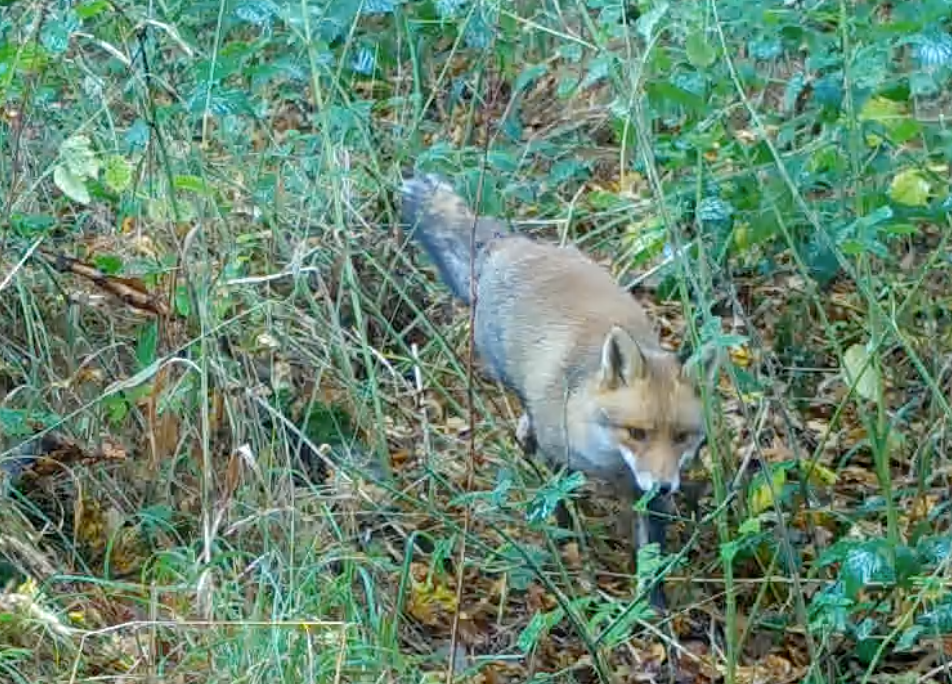There are wild plans at Maple Farm, former grazing land for horses into a haven for wildlife, while providing leadership opportunities for young people in relation to nature recovery. The project, in partnership with Youngwilders, aims to demonstrate the principles of rewilding on a small-scale, mimicking natural processes to encourage the return of a healthy, balanced ecosystem that benefits native species.
We set up passive wildlife monitoring equipment to help identify key species and help baseline the current levels of biodiversity in the land. Biodiversity, which is defined as the variability among living organisms in an ecosystem, can be measured in various ways, and at different levels of depth. One way to measure biodiversity is to assess the species richness of an ecosystem, which is the total number of distinct species within a local community. It would take many hours, days, or even months for us to capture every species found in a given area, especially small insects which can be extremely diverse within a small area.
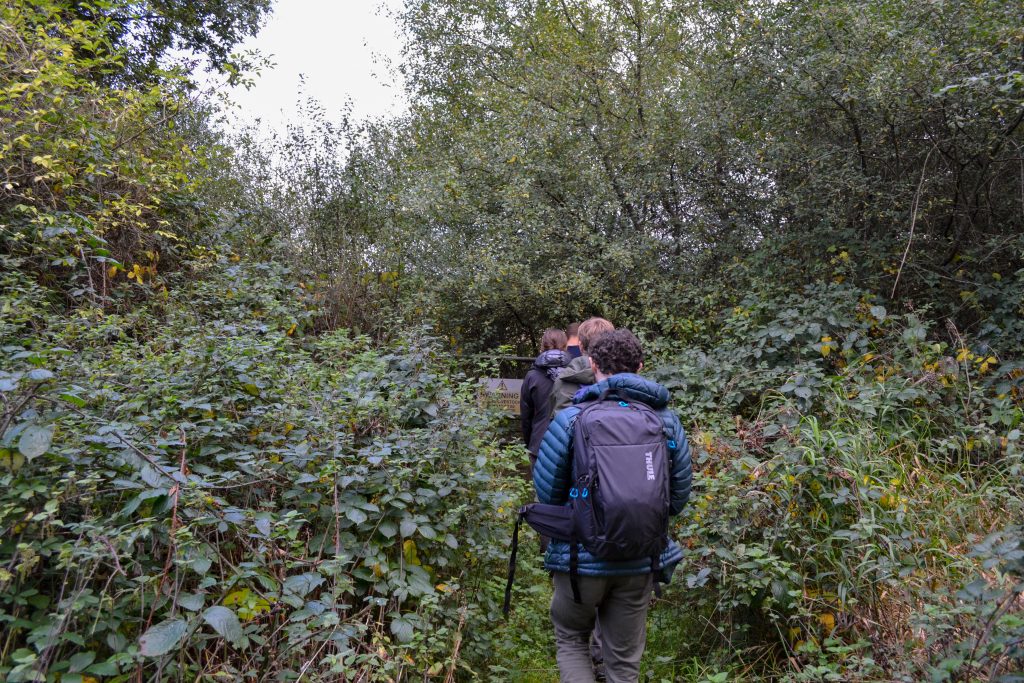
We used passive monitoring devices, detecting bird and mammal species, many of which can be considered key indicator species whose presence or abundance can reflect the health of the ecosystem.
Here we share the findings of one of Maple Farm: 42 species were detected using the methods described below during the period between 16th October – 13th November. Some interesting species include the birds – Hawfinch, the Marsh tit and the mammal – Polecat.
- Mammals: Camera traps were used across the site to detect small land-based mammals, and acoustic monitoring at ultrasonic frequencies were used to identify bat species through their echolocation calls.
- Birds: Acoustic monitoring was also used to identify bird species through their bird song and calls.
Species Overview

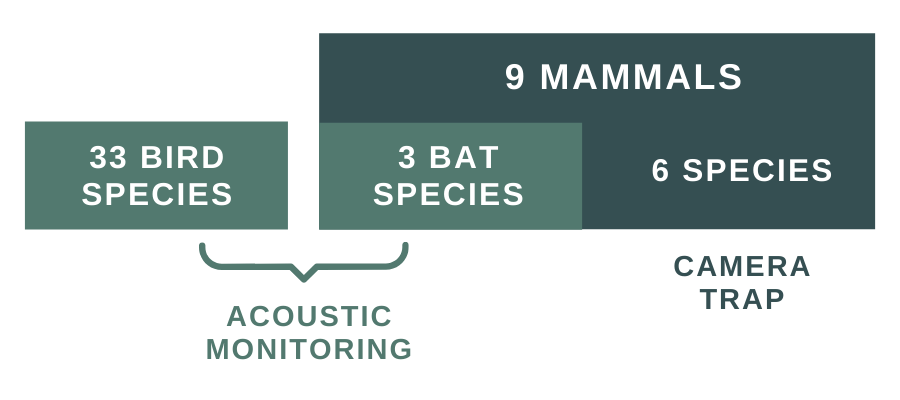
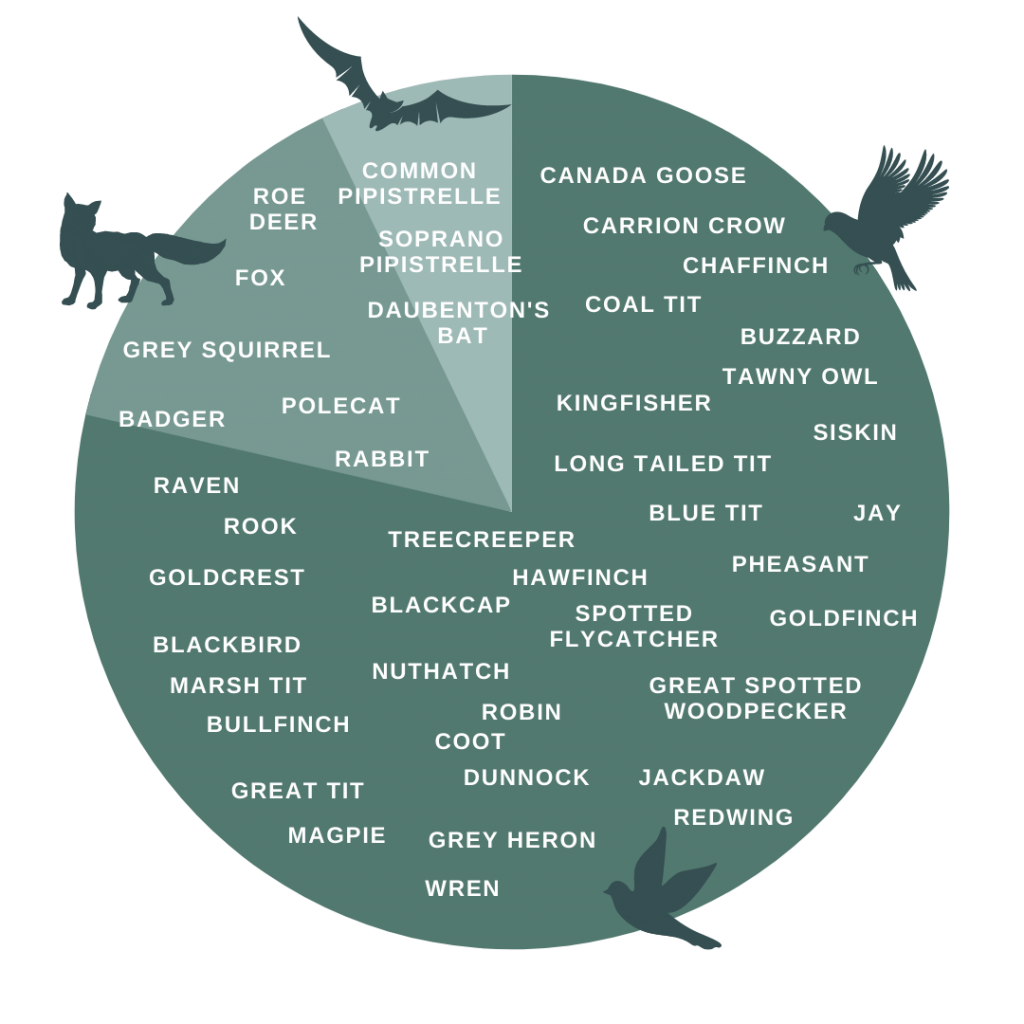
Mammals
6 mammal species (and two bird species, Pheasant and Jay, not highlighted below) were detected using 3 camera traps during the monitoring period. The number of captures for each of the species is recorded in the table below. The polecat could be identified against other members of the mustelid family due to it’s facial markings.

Badger 
Polecat 
Rabbit 
Roe Deer 
Squirrel 
Fox
| Species | Frequency |
| Grey Squirrel (Sciurus carolinensis) | 53 |
| Roe Deer (Capreolus capreolus) | 13 |
| Fox (Vulpes Vulpes) | 5 |
| Badger (Meles Meles) | 4 |
| Rabbit (Oryctolagus cuniculus) | 1 |
| Polecat (Mustela putorius) | 1 |
A selection of clips from the recordings captured can be seen below:
The polecat was almost hunted to extinction in the UK, but has fortunately recovered in population in recent years. It can be differentiated from other members of the mustelid family (such as stoat and weasel) thank to its distinctive facial markings. Their habitats include woodland, marshland, riverbanks and can even make residence in stonewalls or farm buildings.
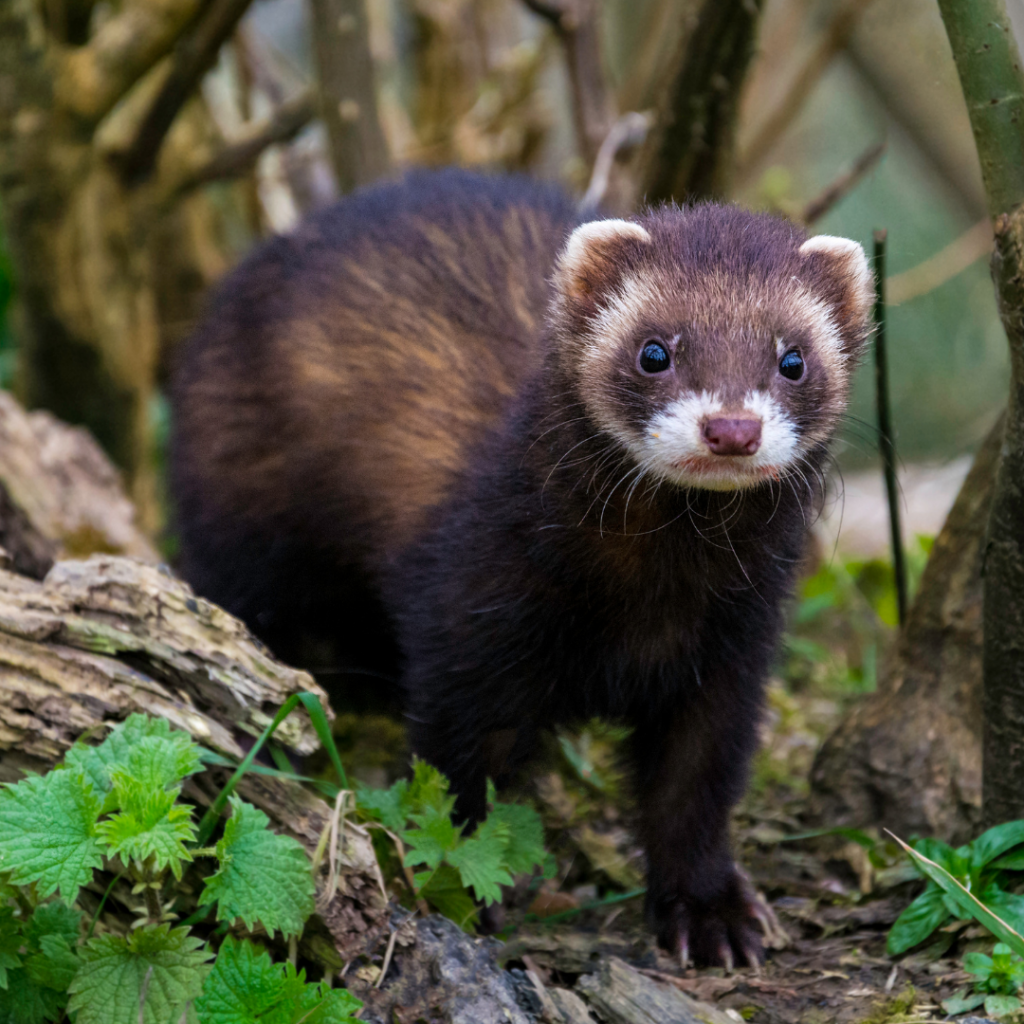
Bats
Different species of bat can be determined by the characteristics of their echolocation signals and ultrasonic calls.
Using acoustic monitoring devices, recording at high frequencies, we can detect species through analysis of the signals recorded. There are limitations to this method, as unusual environments or locations can cause variations in the signals produced. In woodland environments, species can appear similar as they adapt their signal to suit the structure of the environment, and misidentification can occur.
However, several key species can be identified, including several indicator species. Due to their reliance on significant insect populations, their population can reflect the health of the local environment. There are several indicator bat species in the UK, including lesser horseshoe bat, common pipistrelle, soprano pipistrelle, Daubenton’s bat, Natterer’s bat, serotine and noctule – three of these species have been detected in the woodland (highlighted in bold).
The following bat species were detected:
| Species | Description | Weight/Wingspan |
| Common Pipistrelle (Pipistrellus pipistrellus) | The common pipistrelle is our smallest and most common bat. They roost in tree holes, bat boxes and even the roof spaces of houses, often in small colonies. | 3-8g / Wingspan 20-23cm |
| Soprano Pipistrelle (Pipistrellus pygmaeus) | Hard to differentiate from its cousin, the common pipistrelle bat, this widespread species hunts close to water and can be found in woods and gardens. It can be differentiated by the frequency of its echolocation calls (55KHz, higher than the common pipistrelle at 45KHz) | 3-8g / Wingspan 20-23cm |
| Daubenton’s Bat* (Myotis daubentonii) | Sometimes referred to as the ‘water bat’, the Daubenton’s bat forages for small flies, at water sources, hunting near the water’s surface. Daubenton bats will hibernate underground over winter, and are generally last seen in October. | 7-12g / Wingspan 24 – 27cm |
The common pipistrelle can eat 3,000 gnats in a single night. In October, common pipistrelles become less active and by December will have entered full hibernation. The bats normally hibernate in buildings, taking advantage of the warmth and shelter provided. As the weather begins to warm up in March, the bats start emerging, usually becoming fully active by May.



Bats are a vital part of our native wildlife, and occupy a range of habitats, from wetlands and woodlands to urban environments. They are important for monitoring purposes, as they are very sensitive to changes in the environment, and can therefore tell us a lot about the state of the local environment.
Bat populations have been monitored for many years, and the Department for the Environment, Food and Rural Affairs (DEFRA) recognises 11 out of the 17 UK bat species as biodiversity indicators and monitors their populations to understand our environmental health.
Birds
Bird identification can often be made by birdsong alone, and using passive acoustic monitoring equipment can be a very powerful way to survey a landscape over an extended period of time. 33 bird species were identified during the survey period, listed in order of most frequently observed to least in the table below.

| Species | Number of high confidence* calls recorded | Legal and Conservation Status |
| European Robin (Erithacus rubecula) | 2668 | |
| Long-tailed Tit (Aegithalos caudatus) | 558 | |
| Eurasian Blackbird (Turdus merula) | 534 | |
| Tawny Owl (Strix aluco) | 404 | BoCC Amber List |
| Eurasian Wren (Troglodytes troglodytes) | 334 | |
| Hawfinch (Coccothraustes coccothraustes) | 285 | BoCC Red List |
| Spotted Flycatcher (Muscicapa striata) | 250 | BoCC Red List |
| Ring-necked Pheasant (Phasianus colchicus) | 187 | |
| Goldcrest (Regulus regulus) | 167 | |
| Eurasian Magpie (Pica pica) | 121 | |
| Dunnock (Prunella modularis) | 86 | BoCC Amber List |
| Eurasian Treecreeper (Certhia familiaris) | 77 | |
| Marsh Tit (Poecile palustris) | 68 | BoCC Red List |
| Carrion Crow (Corvus corone) | 50 | |
| Redwing (Turdus iliacus) | 49 | BoCC Red List |
| Great Tit (Parus major) | 43 | |
| Eurasian Jackdaw (Corvus monedula) | 41 | |
| Rook (Corvus frugilegus) | 32 | |
| Eurasian Jay (Garrulus glandarius) | 27 | |
| Eurasian Blue Tit (Cyanistes caeruleus) | 26 | |
| Common Kingfisher (Alcedo atthis) | 25 | |
| Common Buzzard (Buteo buteo) | 24 | |
| Great Spotted Woodpecker (Dendrocopos major) | 21 | |
| European Goldfinch (Carduelis carduelis) | 19 | |
| Eurasian Bullfinch (Pyrrhula pyrrhula) | 14 | BoCC Amber List |
| Common Chaffinch (Fringilla coelebs) | 8 | |
| Coal Tit (Periparus ater) | 5 | |
| Eurasian Siskin (Spinus spinus) | 5 | |
| Common Raven (Corvus corax) | 3 | |
| Canada Goose (Branta canadensis) | 2 | |
| Gray Heron (Ardea cinerea) | 2 | |
| Eurasian Coot (Fulica atra) | 1 | |
| Eurasian Blackcap (Sylvia atricapilla) | 1 |
Notable Species
In 2018 the UK woodland bird index was 29% below its 1970 value. In the short term, between 2012 and 2017, the smoothed index decreased by 8%. Several of the identified species highlighted below have experienced serious decline in population in recent years, with three species (Hawfinch, Spotted Flycatcher and Wood Warbler) on the red list species of conservation concern (BoCC4).
Source: British Trust for Ornithology, Defra, Joint Nature Conservation Committee, Royal Society for the Protection of Birds.
The Tawny Owl can be easily detected through its distinctive male and female calls throughout the night. You can listen out for the characteristic ‘hoo-hoo’ call of the male and the shrill ‘kew-wick’ of the female in response. They have sadly suffered a 38% population decrease between 1970-2018.

The Marsh tit is a small, mainly brown bird, with a shiny black cap, dark ‘bib’ and pale belly. In the UK its identification is made tricky by the very similar appearance of our race of willow tit, and it can often be found hoarding seeds for a rainy day. Sadly its population has decreased by almost three quarters since the 1960s, placing it on the BoCC Red list.

The Hawfinch is the largest of the finch family, but also surprisingly difficult to find, hiding away in the forest canopy. However, they can be more frequently spotted in winter, when continental migrants arrive.

Want to learn more about biodiversity monitoring, and how you can observe and enjoy the wildlife around you? Follow us on social media or on our mailing list to learn more! You can also learn more about Maple Farm here.

